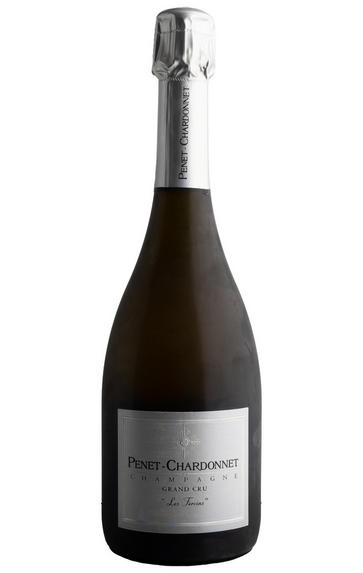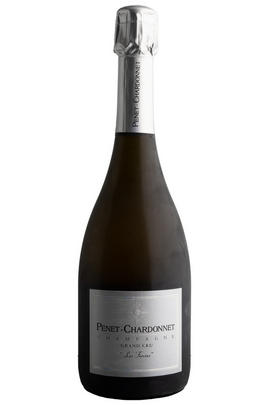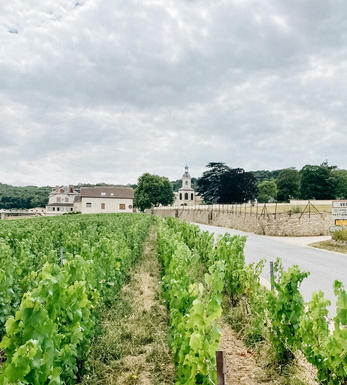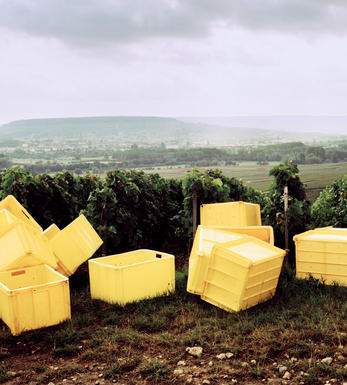
2010 Champagne Penet-Chardonnet, Les Fervins, Grand Cru, Verzy, Extra Brut

Critics reviews
Really rather broad and it approaches the nose as a cloud not a rapier. Hint of putty and lots of minerals. Very zesty but with good undertow of ripe fruit with the Pinot Noir obvious. Really quite fruity. Good stuff!
Jancis Robinson MW, JancisRobinson.com (November 2021)
About this WINE

Champagne Penet-Chardonnet
Champagne Penet-Chardonnet has 400 years of winemaking history behind it. The estate spans six hectares, spread over 30 small plots across Verzy and Verzenay in the Montagne de Reims.
Located in the north-eastern extremity of the region, this land is 100% Grand Cru, and is home to some of the best Pinot Noir vineyards in all of Champagne. The Penet family farms their estate with the utmost care for nature, using sustainable and organic methods.
The estate is now run by fourth generation winemaker Alexandre Penet and his wife Martine, who have redefined the house style since taking over in 2009. Alexandre vinifies all crus separately, bottling the best sites as single lieu dits. These wines are set to become some of the most desired in the region: detail, expressive and made with precision, they are totally distinctive in personality.

Champagne
Our wine buyers leave no stone unturned in their quest to find the best Champagnes, and Berry Bros. & Rudd takes particular pride in its eclectic range of artisan Champagnes that represent a real sense of terroir, original winemaking, labour-intensive viticulture (often organic/biodynamic) and the uncompromising excellence of the end product.
How Champagne is made
In 1668, in the village of Hautvillers, the monk turned cellar master, Dom Pérignon, is said to have discovered how to make sparkling wine; while the same technique is used all over the world today, the region of Champagne continues to make some of the finest.
So what makes wine sparkle? Adding a solution of sugar and yeast to a white wine starts another fermentation in the bottle which results in the bubbles. Once the yeasts have done their job, a sediment known as ‘lees’ collects on the side of the bottle; contact with this deposit during maturation gives the wine its characteristic flavours of freshly-baked bread, toast and biscuit. Once this sediment is isolated (remuage) and removed (dégorgement), the Champagne is topped up with a sugar solution to make it dry or sweet
The Champagne Wine Region
Champagne is the most northerly wine region in France and is situated north-east of Paris. There are three main vineyard areas: Côte des Blancs, Vallée de la Marne and Montagne de Reims.
Ripeness of the grapes is often a problem, which is one reason why a blend of grape varieties is usually used: the white Chardonnay to give fruit and elegance, and two reds – Pinot Noir (particularly to provide a ‘backbone’) and Pinot Meunier.
In Champagne there are around 15,000 growers and 290 Champagne houses. Traditionally, growers have sold their grapes to the Champagne houses which account for 70 percent of production and 90 percent of exports. Recently, increasing numbers of growers are making growers’ Champagnes themselves, using their own grapes.
The Champagne houses used to be organized into a Syndicat des Grandes Marques, which had 28 members, not all of them of equal quality. That has now been superseded by the Club des Grandes Marques, with 24 participants: Ayala, Billecart-Salmon, Bollinger, Canard- Duchêne, Deutz, Dom Pérignon, Heidsieck & Co. Monopole, Henriot, Krug, Lanson, Laurent-Perrier, Moët & Chandon, G.H. Mumm, Perrier Jouët, Joseph Perrier, Piper-Heidsieck, Pol Roger, Pommery, Ch. & A Prieur, Louis Roederer, Ruinart, Salon, Taittinger, Veuve Clicquot-Ponsardin.
Champagne Styles
Vintage Champagne
Made exclusively from grapes grown in a single year, this is produced only in the best years, and is released at about six years of age.
Non-Vintage Champagne
Most of the Champagne produced today is Non-Vintage, comprising the blended product of grapes from multiple vintages. Typically grapes from a single-year vintage will form the base of the blend, ranging from 15 percent to up to 40 percent.
Rosé Champagne
Typically light in colour, rosé Champagne is produced either by leaving the clear juice of black grapes to macerate on its skins for a brief time (known as saigneé), or by adding a small amount of Pinot Noir red wine to the sparkling wine cuvée. The saigneé method is more elaborate and costly, requiring highly-skilled winemaking, hence only a few houses still use it – among them Laurent Perrier and Louis Roederer.
Luxury (Prestige) Cuvée
Top of the range, this is vintage-dated. Famous examples include Louis Roederer's Cristal, Laurent-Perrier's Grand Siècle, Moët & Chandon's Dom Pérignon, Duval-Leroy's Cuvée Femme and Pol Roger's Cuvée Sir Winston Churchill.
Demi-Sec (Rich) Champagne
Demi-Sec or Rich is a medium-dry to medium-sweet style which occupies the other end of the spectrum from the standard dry "Brut" style. Brut Natural or Brut Zéro contains less than three grams of sugar per litre, Extra Brut has less than six grams of sugar per litre, and Brut less than 12 grams of sugar per litre.
Recently Disgorged Champagne
R.D. (Recently Disgorged) style was introduced for the first time by Madame Bollinger in 1961, on the 1952 Bollinger Grande Année vintage. Late disgorgement allows the Champagne to retain its freshness, vivacity and fruity expression, despite the ageing.
Blanc de Blancs Champagne
Blanc de Blancs denotes a Champagne made exclusively from Chardonnay grapes.
Blanc de Noirs Champagne
Blanc de Noir Champagnes are made exclusively from black grapes, Pinot Noir (typically) and Pinot Meunier grapes. Bollinger's prestige cuvée Vieilles Vignes Françaises is the lead example.

Champagne blend
Which grapes are included in the blend, and their proportion, is one of the key factors determining the style of most Champagnes. Three grapes are used - Pinot Noir, Chardonnay and Pinot Meunier.
26% of vineyards in Champagne are planted with Chardonnay and it performs best on the Côtes des Blancs and on the chalk slopes south of Epernay. It is relatively simple to grow, although it buds early and thus is susceptible to spring frosts. It produces lighter, fresher wines than those from Burgundy and gives finesse, fruit and elegance to the final blend. It is the sole grape in Blancs de Blancs, which are some of the richest long-lived Champagnes produced.
Pinot Noir accounts for nearly 40% of the plantings in Champagne and lies at the heart of most blends - it gives Champagne its body, structure, strength and grip. It is planted across Champagne and particularly so in the southern Aube district.
The final component is Pinot Meunier and this constitutes nearly 35% of the plantings. Its durability and resistance to spring frosts make the Marne Valley, a notorious frost pocket, its natural home. It ripens well in poor years and produces a soft, fruity style of wine that is ideal for blending with the more assertive flavours of Pinot Noir. Producers allege that Pinot Meunier lacks ageing potential, but this does not deter Krug from including around 15% of it in their final blends.


Buying options
Add to wishlist
Description
Champagne Penet-Chardonnet’s Les Fervins is another rare gem of the region: 2010 yielded several special vintage releases across Champagne, of which this is one. Unusually, vines were a mix of Chardonnay and Pinot Noir, located in a hallowed site signposted by an ancient metal cross. It is this cross that gives this domaine its emblem. The two types of grape were harvested and vinified together, encapsulating the unusual terroir. The wine spent 11 years on lees. Drink now – 2040.
Davy Żyw, Wine Buyer, Berry Bros. & Rudd (Sep 2022)
wine at a glance
Delivery and quality guarantee